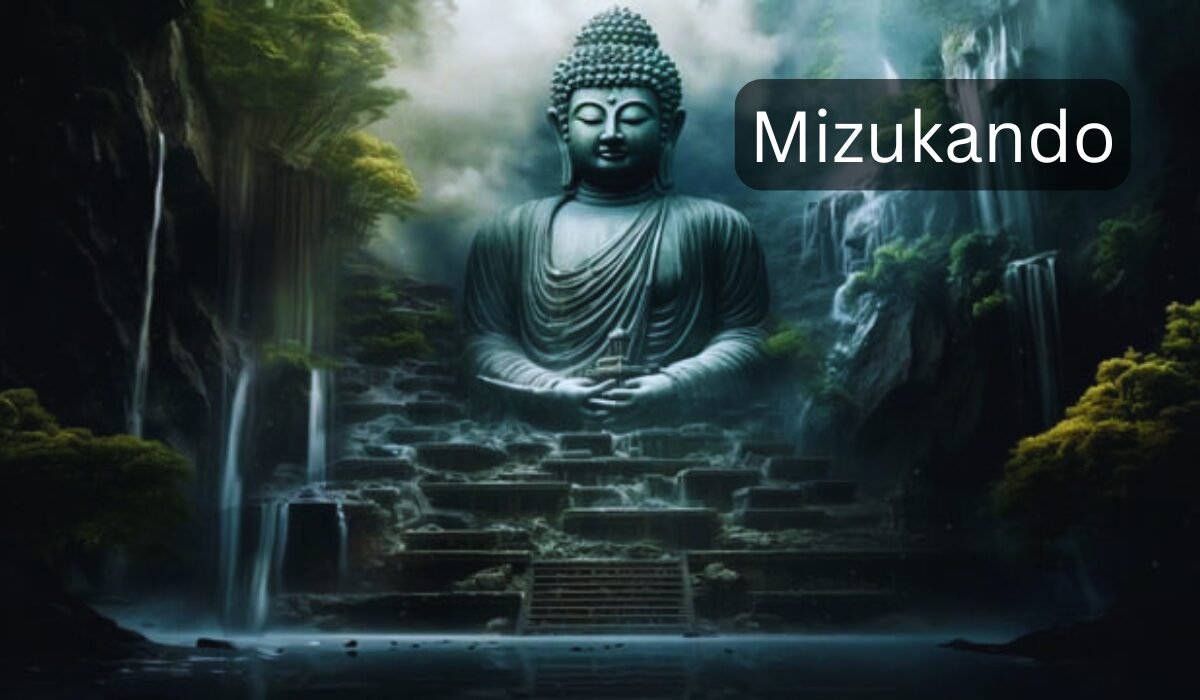Mizukando is a revered Japanese artwork form, seamlessly mixing conventional craftsmanship with cutting-edge innovation. Rooted within the harmonious interaction of water and nature, Mizukando gives more than aesthetic beauty; it fosters mindfulness, stability, and a deep understanding of the environment. This painting’s shape has developed over centuries, integrating Zen standards and current layout elements, even preserving its middle values. Today, Mizukando enhances traditional Japanese gardens and inspires international layout inclinations. Its ideas of tranquility and simplicity are embraced in regular existence, from home decor to health practices. As it adapts to the virtual age, Mizukando continues to capture hearts globally, reflecting its enduring importance in every cultural and personal context.
Introduction
Imagine walking through a serene garden in which the gentle sound of water flowing over stones soothes your mind. The art of Mizukando captures this essence, weaving collectively centuries-vintage traditions with modern-day layouts. In this blog publication, we can discover the origins, requirements, and contemporary-day packages of Mizukando and how this timeless artwork inspires and improves lives worldwide.
What is Mizukando?
Understanding the Basics
Mizukando is an artwork that arranges water and herbal elements at its center to create harmonious, tranquil areas. It often capabilities factors like water basins, bamboo fountains, and strategically located stones, all operating collectively to evoke a sense of peace.
The Role of Water
Water is an essential detail in Mizukando, symbolizing purity and the drift of lifestyles. Its movement and sound contribute to the calming atmosphere, encouraging mindfulness and a mirrored image.
Integration with Nature
Mizukando emphasizes the seamless integration of artificial factors with the herbal environment. This stability creates a cultivated and wild region, enhancing its ordinary tranquility.
Historical Roots of Mizukando
Ancient Beginnings
The origins of Mizukando may be traced back to historical Japan, where monks in Zen gardens initially practiced it. These early forms focused on meditation and religious enlightenment.
Evolution Over Time
Over the centuries, Mizukando has developed, incorporating effects from incredible intervals and regions. The creation of recent materials and techniques has allowed for more complicated and numerous designs.
Modern Influences
Today, Mizukando continues to evolve, integrating contemporary design factors while maintaining its conventional roots. This mixture of old and new continues to make the artwork applicable and dynamic.
Principles of Mizukando
Balance and Harmony
One of Mizukando’s central ideas is achieving balance and harmony among all elements. This principle ensures that no unmarried issue overwhelms the others, developing a cohesive and peaceful environment.
Mindfulness and Reflection
Mizukando’s layout encourages mindfulness and reflected photos. Every detail, from the location of stones to the waft of water, is supposed to sell a meditative country.
Simplicity and Minimalism
Simplicity and minimalism are key elements of Mizukando. The artwork avoids excessive ornamentation, focusing on the beauty of natural elements and their arrangement.
Techniques and Materials
Traditional Techniques
Traditional Mizukando techniques incorporate meticulous planning and execution. Artisans regularly spend years analyzing the paintings of stone placement, water float, and plant affiliation.
Modern Innovations
Modern upgrades have introduced new substances and strategies to Mizukando. For instance, the use of LED lights can enhance the cultural enchantment of a lawn at night, adding a present-day touch to conventional paintings.
Sustainable Practices
Many Mizukando practitioners are adopting sustainable practices, such as using recycled water and green materials. These practices align with the artwork’s respect for nature and the surroundings.
Mizukando in Japanese Gardens
Enhancing Beauty
Mizukando has a significant role in improving the beauty of traditional Japanese gardens. The careful association of water and natural factors creates a serene and visually attractive environment.
Creating Tranquil Spaces
The number one purpose of Mizukando in Japanese gardens is to create tranquil spaces that encourage rest and contemplation. These gardens regularly offer a retreat from the hustle and bustle of daily life.
Cultural Significance
Mizukando holds great cultural significance in Japan. It reflects the U.S.A.’s deep admiration for nature and its strength of mind in growing harmonious living regions.
Global Influence of Mizukando
Inspiration for Designers
Mizukando has stimulated designers worldwide, influencing various structure, landscaping, and interior layout factors. Its thoughts of stability, concord, and ease are universally favored.
Adoption in Modern Spaces
Many present-day regions, from employer workplaces to non-public homes, are a factor in Mizukando. Features like indoor water fountains and herbal stone arrangements bring a touch of tranquility to those environments.
Cross-Cultural Appeal
The enchantment of Mizukando extends beyond Japan, resonating with humans from diverse cultural backgrounds. Its normal concern subjects of tranquility and mindfulness make it handy and relevant to a global audience.
Practical Applications of Mizukando
Home Decor
Incorporating Mizukando into home decor can create peaceful and exciting surroundings. Simple additions like a tabletop water fountain or a stone association can transform a living space.
Office Spaces
Mizukando can also decorate workplace regions, promoting an experience of calm and consciousness. Features like indoor flowers, water elements, and herbal materials can enhance the general artwork surroundings.
Wellness Practices
Mizukando’s ideas align well with well-being practices. Elements like water and natural substances may be incorporated into yoga studios, meditation areas, and spa environments to beautify relaxation and mindfulness.
Mizukando and Mental Health
Reducing Stress
The calming impact of Mizukando can help lessen stress and anxiety. The presence of water and natural factors promotes relaxation and an experience of well-being.
Encouraging Mindfulness
Mizukando encourages mindfulness by creating spaces that activate quiet, reflected images. This exercise can enhance intellectual clarity and emotional balance.
Enhancing Emotional Well-being
The splendor and quietness of Mizukando can beautify emotional well-being. Spending time in a Mizukando-stimulated space can raise spirits and promote a high-quality outlook on life.
The Future of Mizukando
Digital Integration
As the era advances, Mizukando is finding new approaches to integrating with digital structures. Virtual reality (VR) and augmented reality (AR) programs are being advanced to deliver Mizukando’s revelatory content to a wider audience.
Ongoing Evolution
Mizukando conforms, adapting to modern trends and demanding situations. Its capacity to combine conventional and contemporary elements ensures its relevance for future generations.
Global Growth
The worldwide growth of Mizukando is a testimony to its enduring attraction. As more people discover its benefits, the artwork form is likely to continue spreading and influencing format practices worldwide.
Conclusion
Mizukando is greater than simply an artwork form; it’s a way of life that fosters mindfulness, balance, and a deep connection with nature. Its timeless ideas and evolving practices make it a valuable addition to any environment, whether a traditional Japanese lawn or a cutting-edge office area. By incorporating Mizukando into our lives, we will create areas that sell tranquility, well-being, and a profound appreciation for the herbal global. Connect to our network of fans and specialists to study how you may integrate Mizukando into your surroundings.

